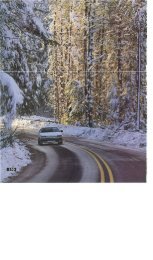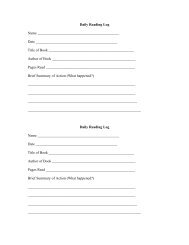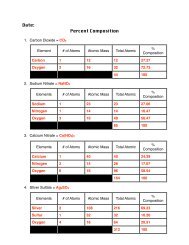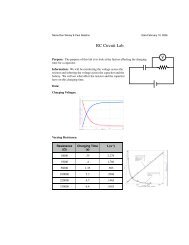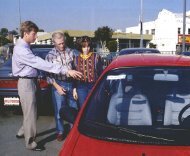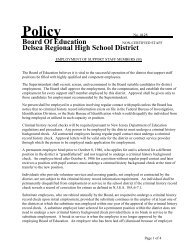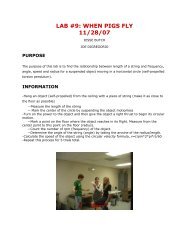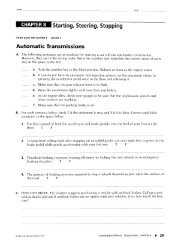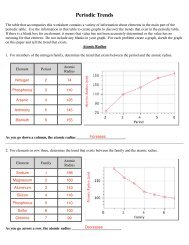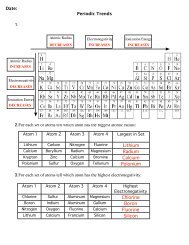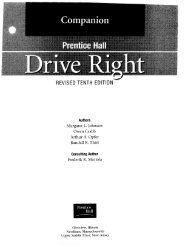Chapter 6 Performing Basic Vehicle Maneuvers
Chapter 6 Performing Basic Vehicle Maneuvers
Chapter 6 Performing Basic Vehicle Maneuvers
You also want an ePaper? Increase the reach of your titles
YUMPU automatically turns print PDFs into web optimized ePapers that Google loves.
Angle parking<br />
120 Unit 2 Controlling Your Vehide<br />
1<br />
i<br />
The following parking procedures<br />
refer to entering a parking space to<br />
your right. When parking to your<br />
left, adjust your actions and visual<br />
checks for the left side. The steps for<br />
each procedure match the numbered<br />
car locations in the pictures.<br />
Angle Parking<br />
Use angle parking to park your vehi-<br />
cle diagonally to the curb. Angle<br />
parking is often used in parking lots<br />
and shopping centers.<br />
1. Check for traffic and pedestrians.<br />
Position your vehicle at least six<br />
feet from the row of parked vehi-<br />
cles. Signal a right turn, check traf-<br />
fic to the rear, and begin braking.<br />
2. Flash your brake lights to warn<br />
drivers behind. Check your right<br />
blind spot and continue braking.<br />
3. Creep forward until you can see<br />
the center of the space without<br />
your line of sight cutting across<br />
the parking line. This is your ref-<br />
erence point to begin turning.<br />
Turn the wheels sharply to the<br />
right. Slowly enter the stall.<br />
4. Straighten the wheels when you<br />
are centered in the space. Deter-<br />
mine your forward reference point<br />
to place the front of the bumper<br />
even with the curb or line.<br />
Use perpendicular parking to<br />
park your vehicle at a right angle<br />
to the curb.<br />
1. Position your vehicle at least<br />
eight feet from the row of parked<br />
vehicles, or as far to the left of<br />
the lane as possible. Flash your<br />
brake lights and signal a right<br />
Perpendicular parking<br />
turn. Check your right blind<br />
spot, and begin to brake.<br />
2. Check traffic to the rear, and<br />
continue braking.<br />
3. Determine your personal reference<br />
point to know when the<br />
front bumper of your vehicle<br />
passes the left rear taillight of the<br />
vehicle to the right of the empty<br />
parking space. Turn the wheel<br />
sharply right. Slowly enter the<br />
stall. Check your right-rear<br />
fender for clearance.<br />
4. Straighten the wheels when you<br />
are centered in the space. Use a<br />
forward r~ference point, like the<br />
driver's siile-view mirror, to stop<br />
before the wheels strike the curb.<br />
Some drivers prefer backing into<br />
a perpendicular parking space. These<br />
drivers consider this a safer maneuver<br />
because they do not back out<br />
into traffic when leaving the space.




